Heraldic positioning is when there are two objects symmetrically flanking a center object. The sameness of the side objects allows for the visual weight in the center to draw the viewer to the center of the image. Therefore, heraldic positioning shows the importance of the middle object, in art before the modern period, which is usually religious. Heraldic positioning was first seen in the Near East usually with animals on either side of a god or goddess. For example, a pin entitled “Man with Serpents” from the Bronze Age, in Kerman, Iran, displays heraldic positioning (Meier & Vidale, 2012, p. 1). Image 1 further connects the Near Eastern tradition of snakes and heraldic positioning seen in Pre-Sargonid Period in Assyria. It is believed that this iconography is religiously affiliated because snakes in the Near East have a tradition of divinity. The Near Eastern tradition of heraldic positioning continues this religious sentiment in ancient Greek art.
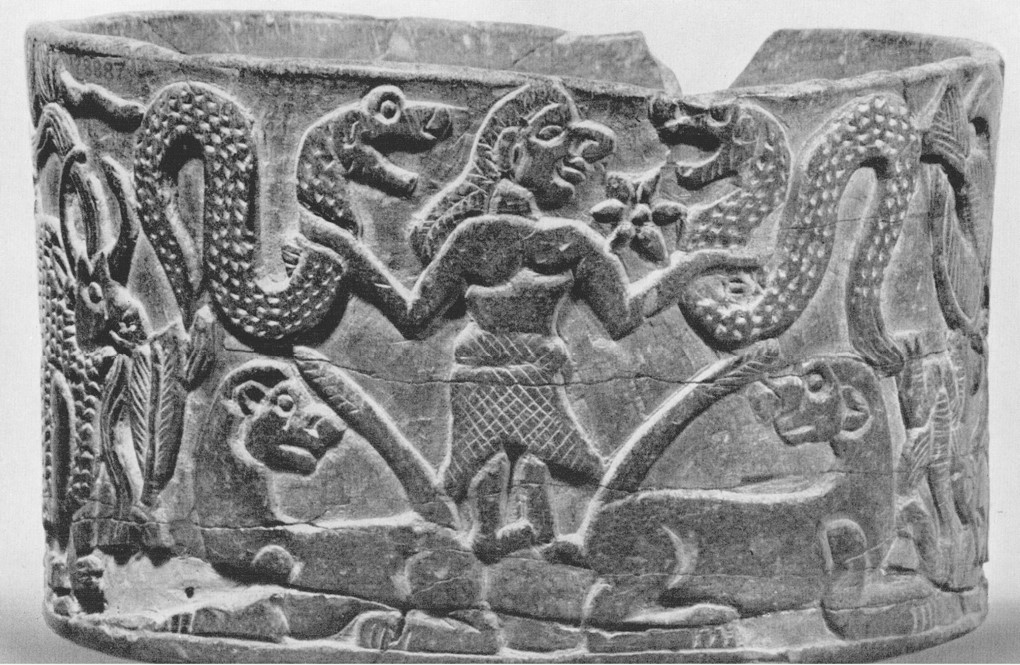
Heraldic Positioning in Minoan Art:
Roughly one thousand years after image 1 was created in Northern Syria, image 2 was made showing an eerily similar subject matter in Crete. The imagery of a figure holding snakes in heraldic position is echoed in the Minoan figure seen below in Image 2. Greek art during the Minoan period had Near Eastern influence, thus had a lot of overlap. Therefore, using heraldic position for the same reasoning, religious, is logical. Plausibly, this image is religious because humans don’t effortlessly hold snakes in the position pictured and gods would have superhuman capabilities to tame these wild creatures into holding them. The resulting image is that the god appears more powerful and less human.
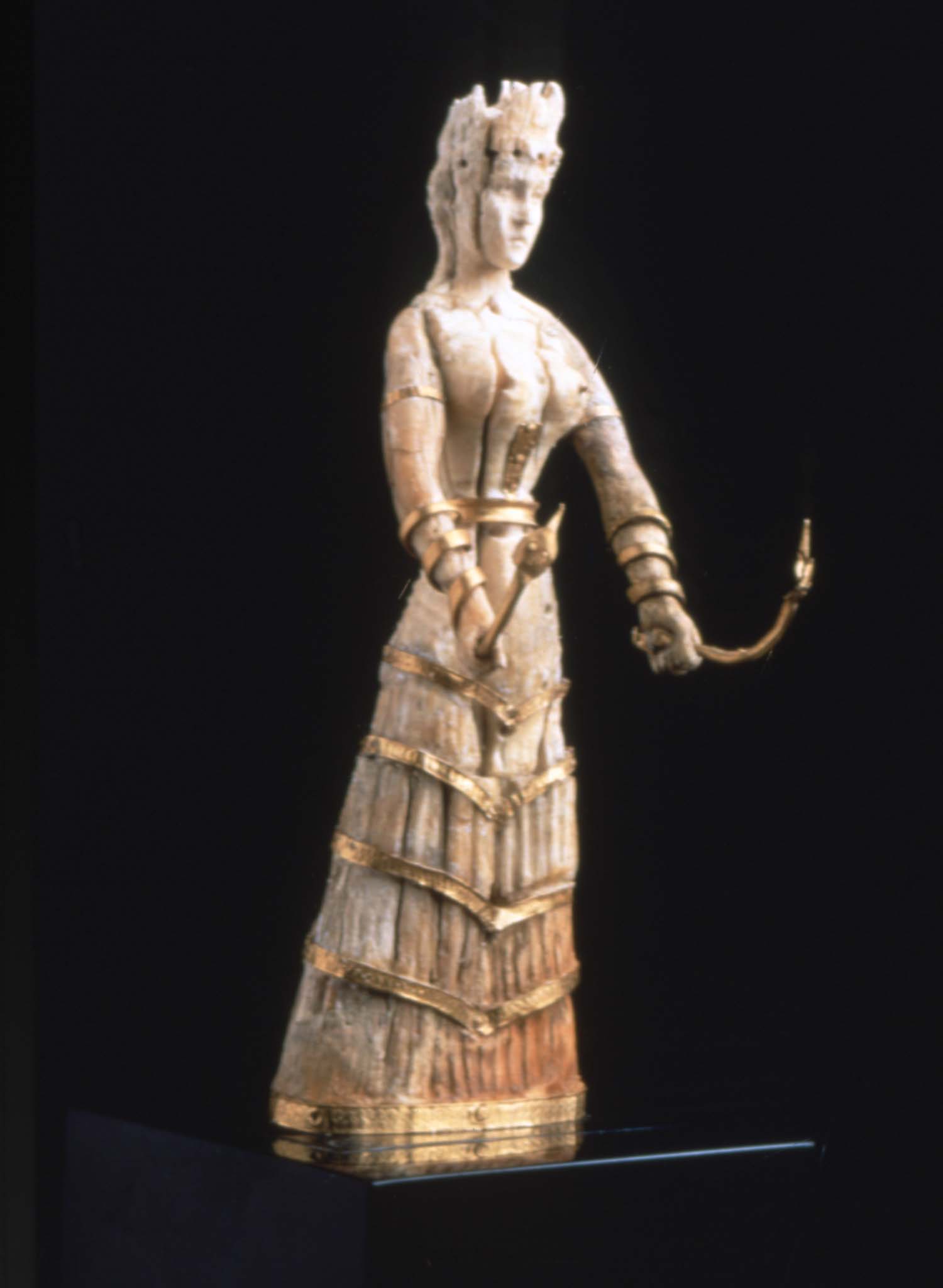
Horns of Consecration in Minoan Art:
The horns of consecration are common Minoan structures that have Near Eastern origins. Minoan religion began in association with funerary rites and expanded to include offerings with early symbols of Minoan religion such as the “horns of consecration” (Lupack, 2010, p. 204). The horns themselves might represent heraldic positioning, there is evidence of. At the very least, they show the overlap of religion and symmetry. The horns could represent an abstract symbol of the Sun established in Egypt (Banou, 2008, p. 28). Due to the horns being frequently featured, like in Image 3, on a high altitude, the horns representing the Egyptian hieroglyphic for ‘horizon’ is probable (Banou, 2008, p. 29). The images below show horns of consecration from the Palace at Knossos between 1700 and 1380 BCE (Artstor). While the meaning can’t be definitively known, the Minoan horns of consecration very likely have Near Eastern beginnings. Having such an important part of Minoan religion stemming from Near Eastern origins suggests that other aspects of Near Eastern religion may have also transferred.
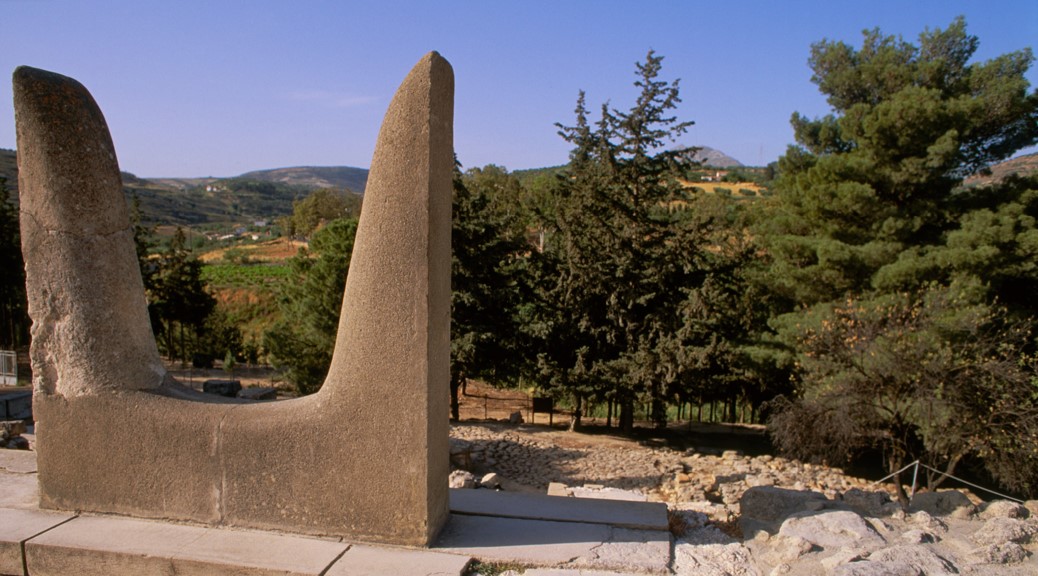
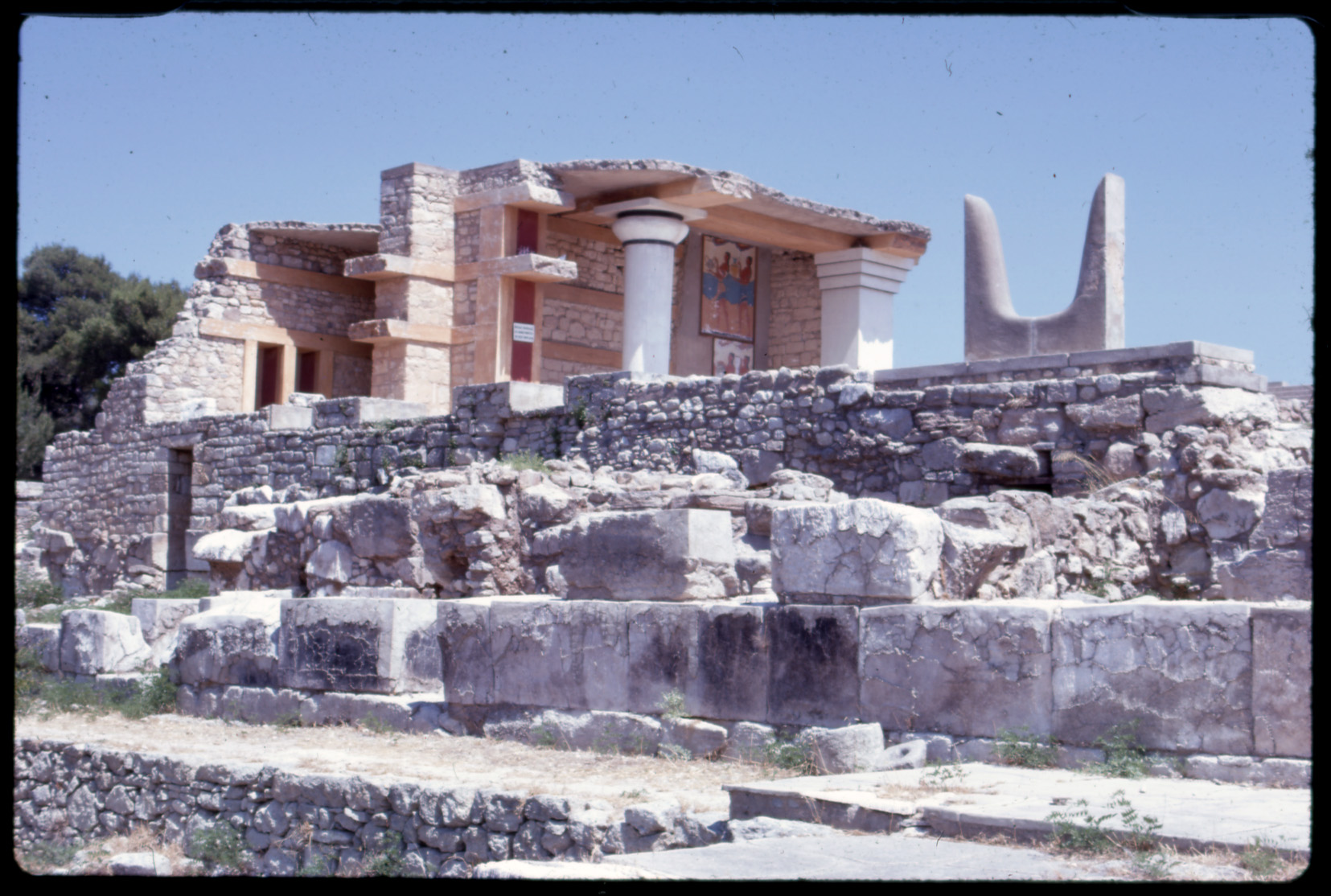
Other Oriental Motifs in Minoan Art:
The griffin in art was one of the most obvious Orientalizing influences from the Near East (Reed, 1976, p. 365). The image below shows a common Oriental motif of a beak griffins with a Greek style (Reed, 1976, p. 365). The griffins being arranged in heraldic positioning has the same effect as the snake goddess, to show power of the human or the god. In Image 5, this would have been the person sitting on the throne. At Knossos, the throne room was used for religious rituals and the person sitting on the throne could have been a high priestess, instead of a political ruler (Lupack, 2010, p. 256). One could assume that heraldic positioning would have been chosen for this room because of the similar religious connections.
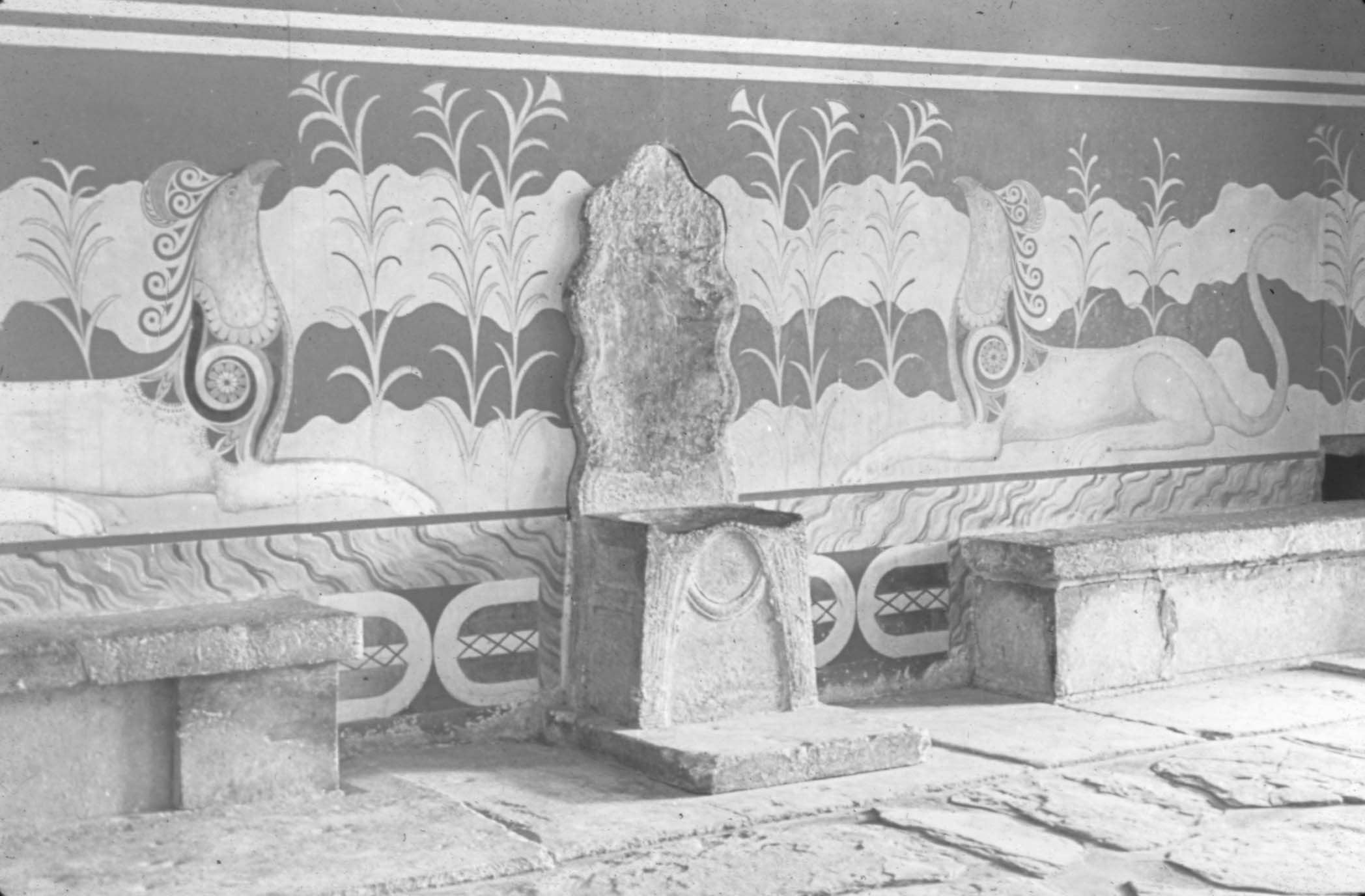
Oriental Motifs in Later Greek Art:
Image 6 depicts a centaur mosaic in heraldic position. The heraldic position and the subject matter both point to mythological roots. The origin of centaurs isn’t concretely known but is thought to be from the Near East (Scobie, 2012, p. 1). One could assume that, like the snake goddess figurine, centaurs display fantastical features that could point to religion. The idea of fantastical creatures overlaps between Near Eastern and Greek cultures, like the centaur, are seen in Egyptian sphinxes, Greek sirens and Greek gorgons.
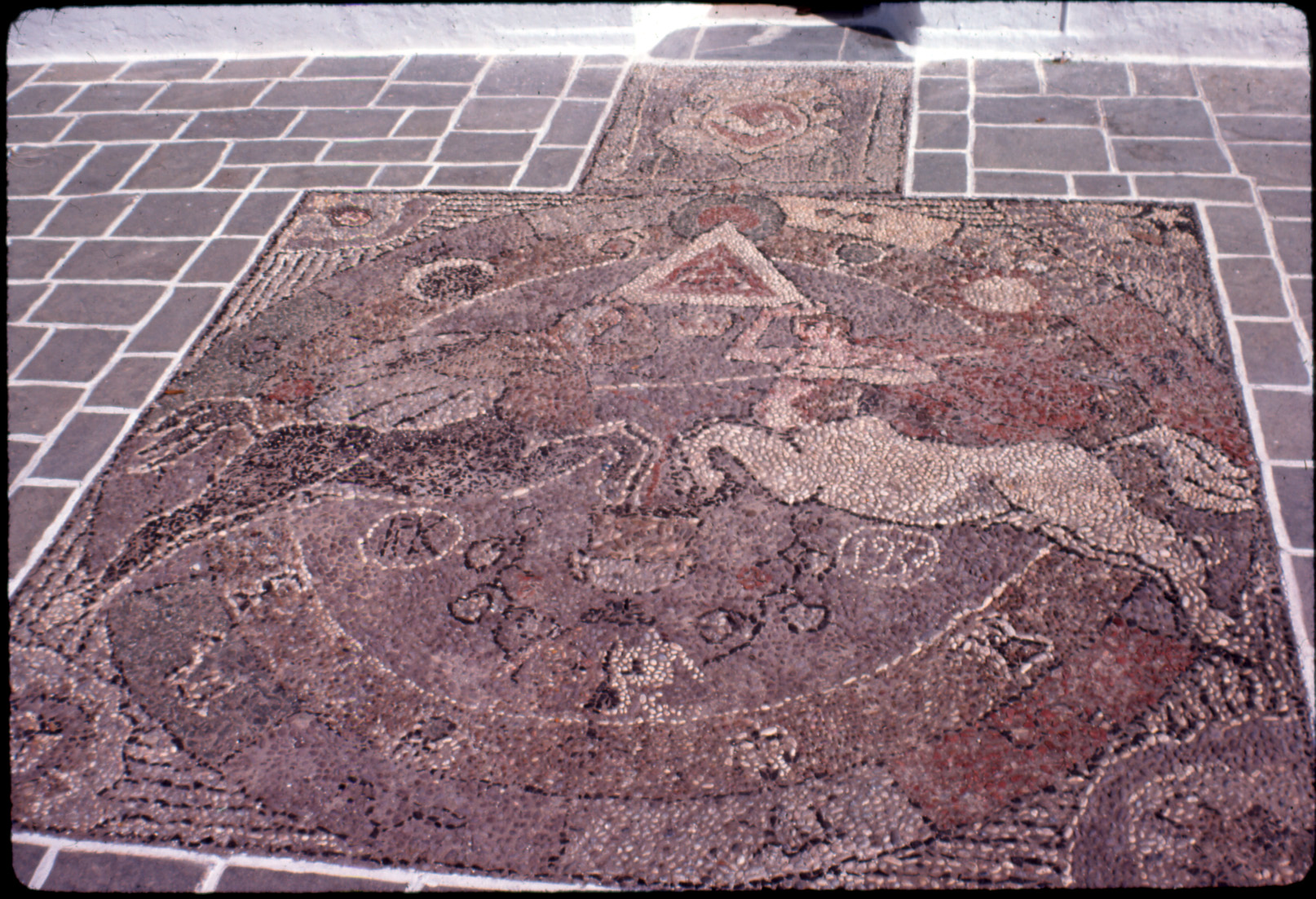
Oriental Motifs in Post-Greek Art:
The image below combines serpentine, griffin and religious motifs. The Mithraic sculpture has four wings, a version of heraldic position as the figure has double wings and the snake are a sign of divinity (Artstor). One could also argue that the two sets of wings and the raised arms, that are reminiscent of images 1 and 2, act as heraldic positioning to exaggeratedly draw the emphasis to the center figure. The statue is likely from Rome because the Mithraic religion was common in the Roman Empire. The Mithraic religion was an Orientalizing cult religion, already bridging the divide between the Near East and Greece (Provanzano, 2009, p. 69). In fact, image 7 was one of the most important iconographic elements of the religion, believing to represent the power of the entire cosmos, while also being the clearest example of Egyptianizing, with the god being lion-headed (Provanzano, 2009, p. 93). This Egyptianizing statue is an important link of the motifs and further illustrates how the griffin and snakes are attributed to religion over time periods. This piece acts as a tail end of ancient Greek art that the Near East tradition of heraldic positioning to show religiosity began.
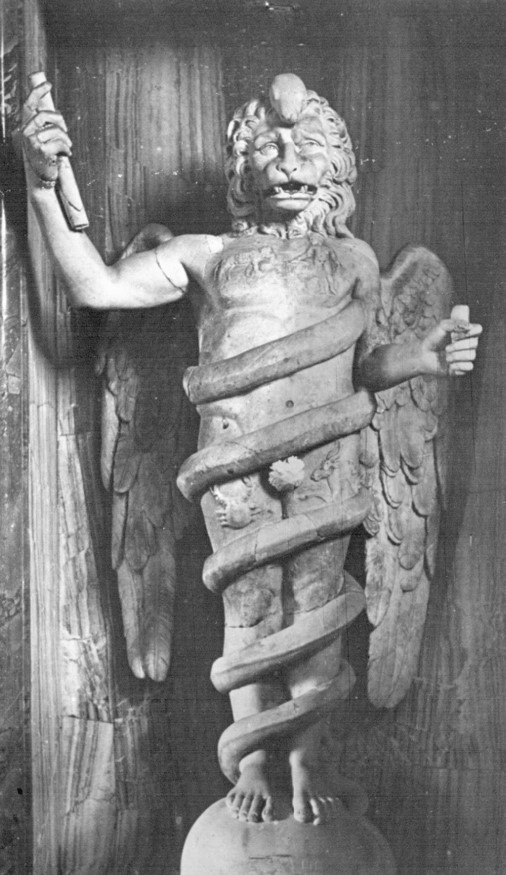
Conclusion:
Art isn’t created in a vacuum and there are many links between cultures throughout art history. Heraldic positioning is one of many examples of European art borrowing from Near Eastern tradition. Near Eastern influence is seen today with the common symbol of the pyramid, cuneiform and clothing. Taking art history classes from other regions can help contextualize Greek art and modern works. Furthermore, art history classes facilitate discussions where meaning is tried to be found from works that were created thousands of years ago. Conversations like “is there mythological meaning in this work or is our contemporary viewpoint clouding our judgement?” are valuable in decentralizing our viewpoint as the norm, which transcends academic disciplines. Decentralizing our viewpoint is useful in everyday life, beyond the classroom, like in being a better friend and a more empathetic global citizen.
Vivian Ehrenreich '23